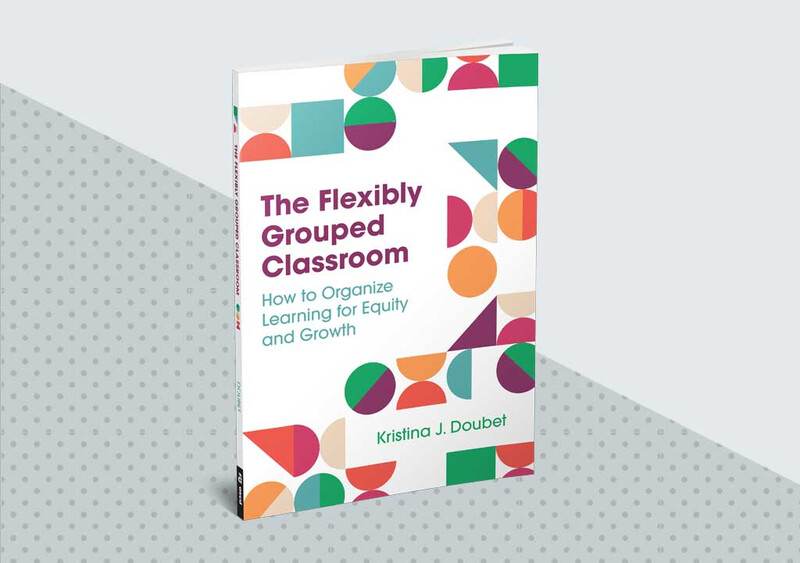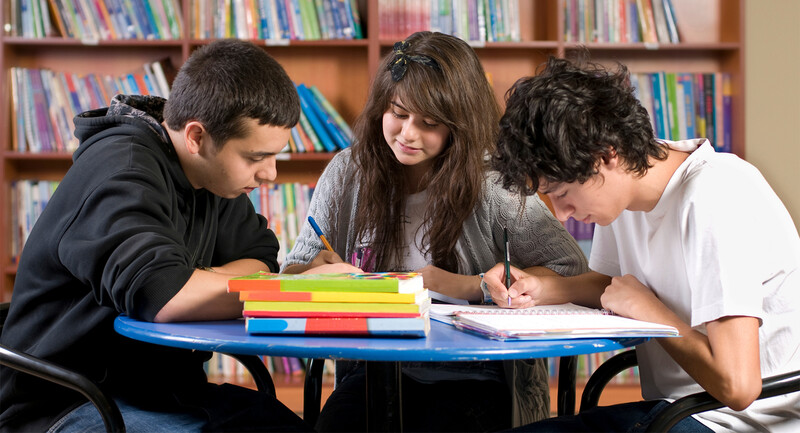In many schools, classrooms are beginning to resemble their pre-pandemic selves: Plexiglass has been removed; desks are no longer six feet apart; and sharing materials is once again common practice. These changes give rise to the hope that we may return to some of the routines we had to set aside to follow pandemic guidelines. Is it, then, the right time to push for a return to unrestrained student groupwork?
Some teachers who jumped back into student collaborations full throttle would respond with a shocked “No!” With students so used to working individually and so not used to regulating themselves, their impulses, their concentration, and so on, these initially eager-to-group teachers found the need to slam on the brakes as groupwork turned chaotic.
What a dilemma! We know students need to collaborate to become whole and healthy again. Our current focus on social-emotional learning is not misplaced, but at this juncture it needs scaffolding. So where—and how—do we begin? How can we ease students back into groupwork in a way that is manageable for both them and for us in this strange new era of teaching?
1. Create Full-Class Connections First
Begin the day or the class period with students answering a greeting question—from a circle or just from their seats—so that every student has the chance to speak and have a right answer, and so they can connect with each other around low-risk areas of interest. Questions about favorites such as cereals, sports, candies, seasons, pizza toppings, shows, and ice cream flavors are an easy place to start. Sharing dreams and goals for the future can come later in the semester. The opportunity for students to learn about one another in this fashion sets the stage for more relaxed and welcoming small-group interactions.
Establishing classroom norms is another important anchoring activity that should precede attempts at formal groupwork. Students can work in temporary groups on a nonacademic challenge (solving a puzzle, unlocking an “escape box”) and then debrief the experience to create guidelines for effective groupwork. Drawing on that experience and others, students can also create a classroom contract through which they agree to be respectful, productive members of any collaborative formation they are a part of—be that full or small group—and define what that would look like. These guidelines or agreements should be posted or published in an area easily visible to all students.
2. Grease the Wheels of Interaction
Before forming formal groups that work for extended time periods on high-stakes tasks (those that assess important learning goals), it’s important to use multiple quick, low-stakes groupings that have little meaning attached to who is working with whom. One such grouping strategy is “Fold-the-Line.” In this activity, students line up in a spectrum according to a given criteria (birthday, height, how much they like snow, and so on); one end of the line “folds” so that it faces the other end, creating instant partner groups. Students talk with these partners temporarily, with the line moving every few minutes to create new partnerships OR partners/quads sit down and work together for a few minutes.
Other low-stake grouping strategies include “Four Corners” or using playing cards to form like-suit groups or like-number groups. These group activities are efficient because they require little pre-planning. They are also temporary, so if issues develop, they can be dealt with quickly or the grouping itself can be disbanded. These groupings serve as both practice for students and formative assessment for the teacher to see what kinds of interpersonal scaffolding students will need in future collaborations.
3. Start Small
As you move from informal, temporary groups to more formal academic collaborations, consider beginning with partners or trios before moving to quads. Partnerships offer a setting to practice all the norms and guidelines fleshed out by the class in a more controlled setting. Those partners can combine with other duos to share their work as an “exercise” in working with larger groups. Following the same rule of thumb, keep the tasks small at the beginning, as well. Rather than students’ first academic collaboration being a week-long project, consider assigning a smaller performance task that can be completed in a portion of one class period or block.
Partnerships offer a setting to practice all the norms and guidelines fleshed out by the class in a more controlled setting.
Kristina Doubet
4. Build in Structure
Make your classroom “group friendly” by hanging colored paper lanterns from the ceiling or color-coding desks with stickies so that you can easily instruct groups where to meet. Establish structures for gaining the attention of students (clapping, a light switch), monitoring time (online timers), retrieving and submitting assignments (online LMS or baskets in the classroom), and procuring materials (tubs on shelves, caddies on tables). Before each task, make your expectations clear for what should be accomplished by when, available resources, and where and how to get help if needed. The latter should include steps before consulting the teacher to encourage group interdependence and problem-solving.
5. Encourage Self- and Group-Assessment
In both the lower- and higher-stakes grouping configurations described above, allow time for students to assess themselves on how well they adhered to the group norms and/or contract agreements established by the class. Revisit those evaluation tools to determine if they need to be adjusted. Once the class is happy with them and the criteria are familiar, ask groups to follow their self-evaluations with an evaluation of their group as a whole. These regular evaluations will help build a schema or framework in students’ minds of what is expected of them in collaborative situations. This will require time invested on the front end, but it will pay off in the long run.
6. Mix it Up
Once students are used to working in random groups, more formalized partnerships, and combined quads, take advantage of your established collaborative “routine” to pull small groups for targeted instruction following a formative assessment. With students in such vastly different places in their learning right now, the more specific our feedback can be, the better. If students are used to working in groups, providing feedback to groups will feel like a logical next step, especially if it is framed that way (“I was looking at your exit slips and noticed some patterns in your responses. I’m going to work with you in like-pattern groups to make our time more efficient so we can move to _______ next.”). This helps ensure that every student—no matter how behind or ahead—can leverage where they are and what they can do to take the right “next step” in their learning.
It is Time
Over the last couple of years, we have done the difficult things we needed to do to survive. But perhaps even more difficult has been trying to return to the things we love, only to have them crumble and backfire. Collaborative learning has been one of those things for many of us. Turning to more isolated models of instruction was a necessary albeit painful concession during the pandemic. Returning to groupwork and having it turn sour has been even more distressing. That doesn’t mean we have to abandon our efforts, though.
If we truly believe that teaching is an inherently social undertaking, and that, as minister and professor H.E. Luccock once said, “No one can whistle a symphony. It takes a whole orchestra to play it,” these six steps can help us reintroduce our students to their role in the orchestra and give them some rehearsal playing their symphony. In other words, we can be collaborative again; it will just take time and practice.
The Flexibly Grouped Classroom
In this comprehensive guide to flexible grouping, Kristina Doubet shares dozens of instructional strategies, tips, templates, and specific trouble-shooting advice to position every student to learn better.









